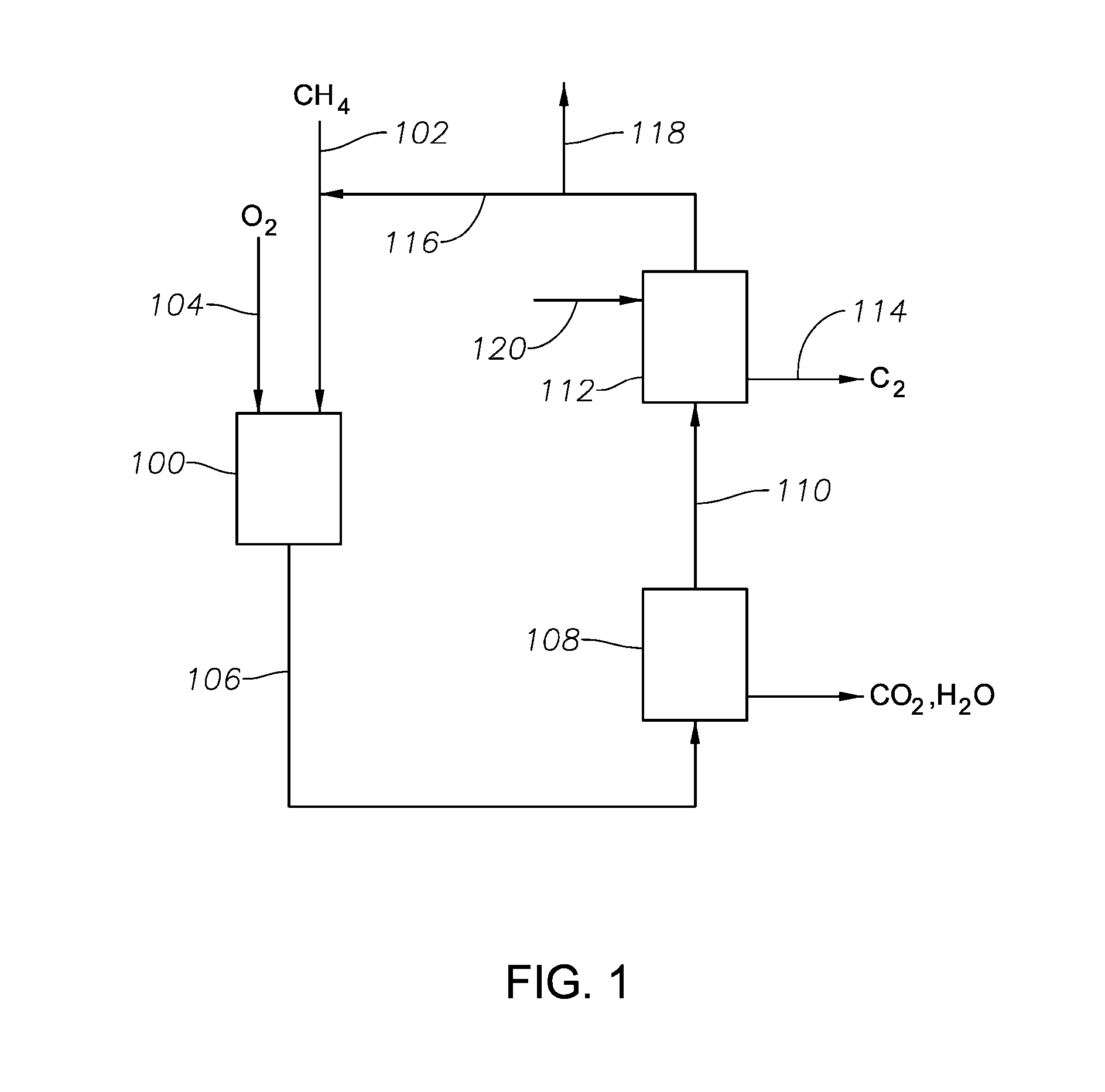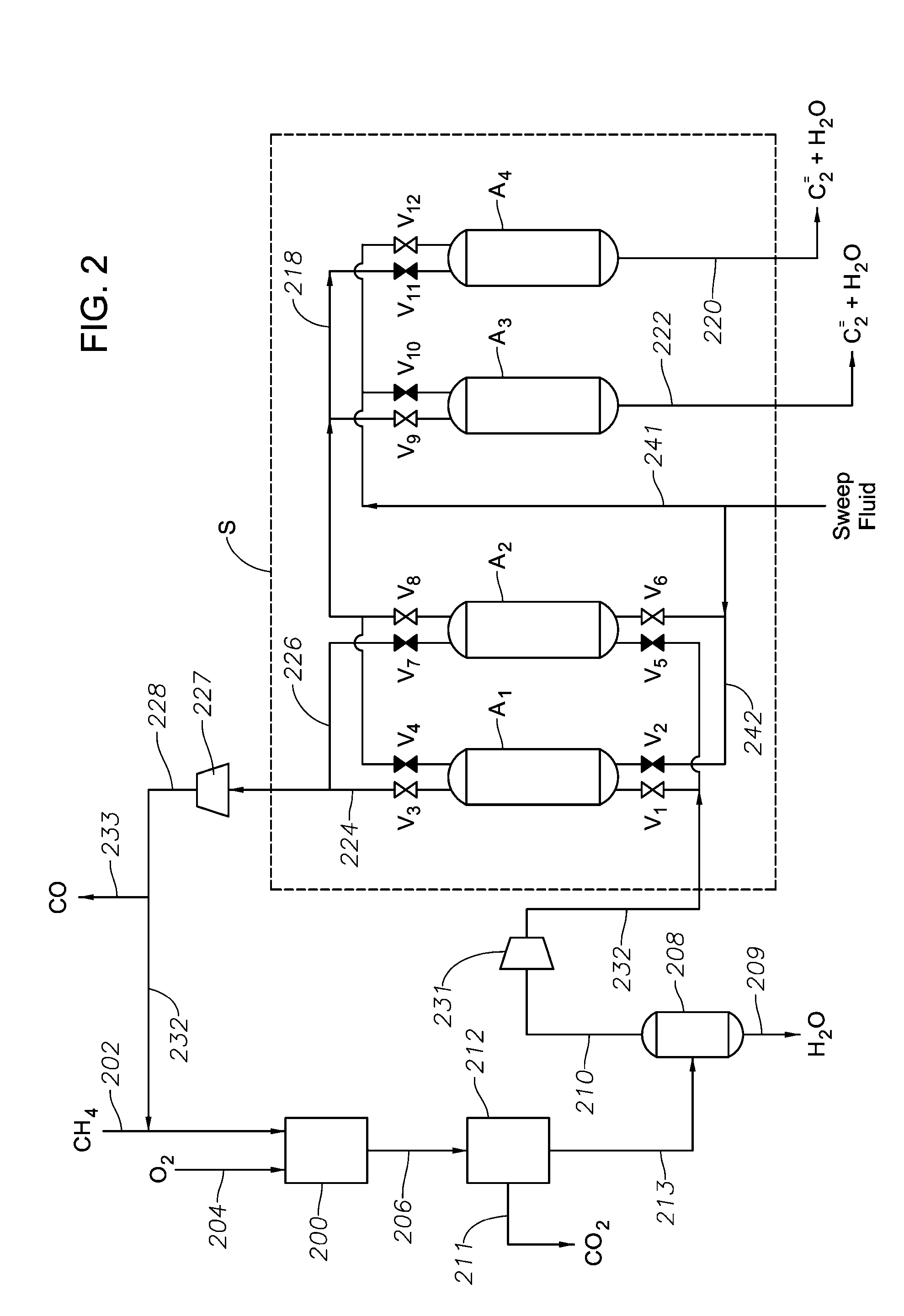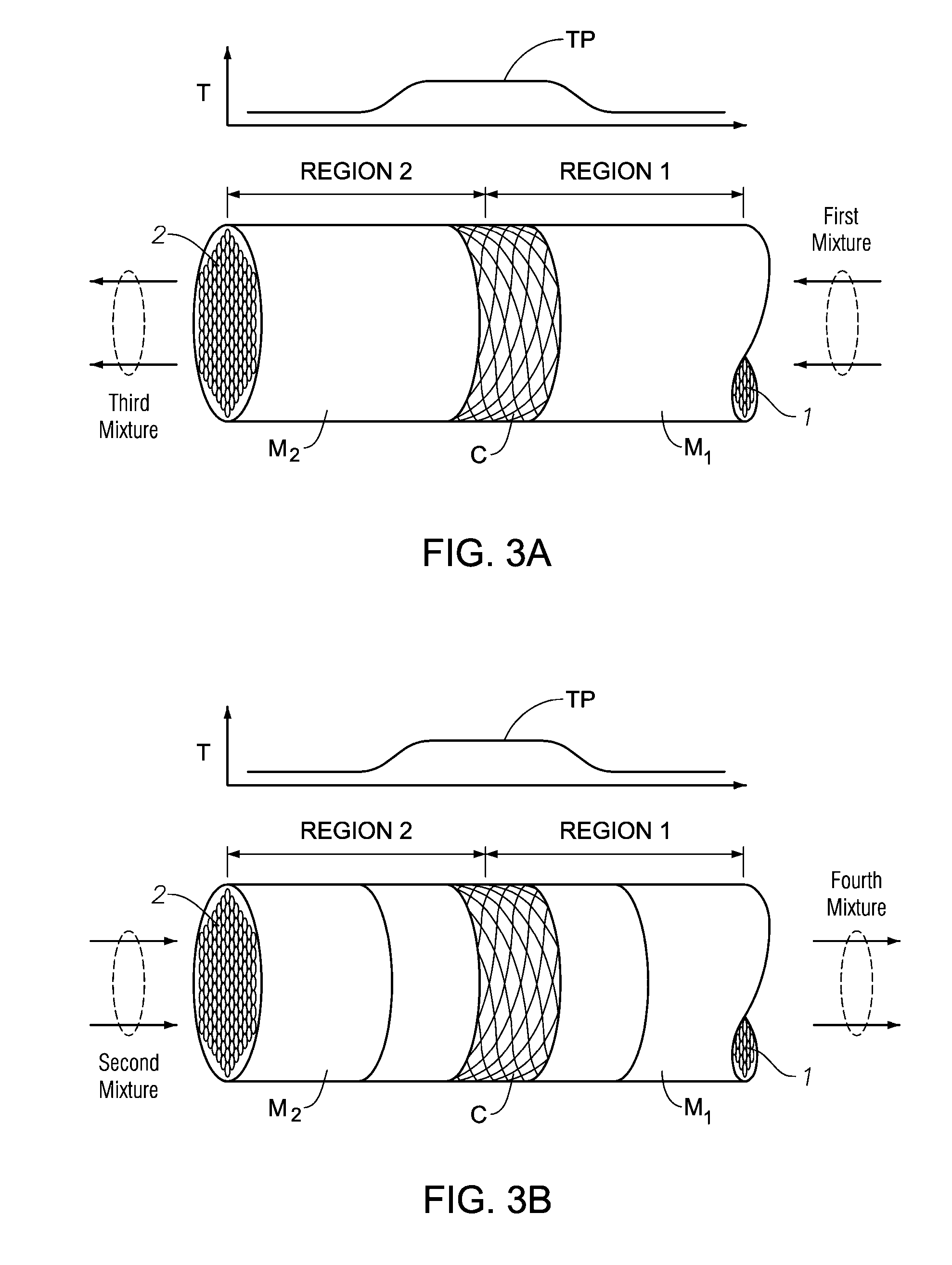Catalytic Alkane Conversion and Olefin Separation
- Summary
- Abstract
- Description
- Claims
- Application Information
AI Technical Summary
Benefits of technology
Problems solved by technology
Method used
Image
Examples
example 1 (with reference to fig.1)
Example 1 (with Reference to FIG. 1)
[0166]FIG. 1 depicts a generalized system for selectively removing the specified C2 composition according to certain aspects of the invention. Hydrocarbon conversion reactor 100 contains the specified hydrocarbon conversion catalyst, namely one having oxidative coupling and / or oxydehydrogenation functionality. A hydrocarbon reactant containing methane (CH4) is introduced into the hydrocarbon conversion reactor 100 via a line 102, and oxidant containing molecular oxygen (O2) is introduced via a line 104. At least a portion of the methane is catalytically converted to a reaction mixture comprising (i) a C2+ composition, including at least ethane and ethylene, and (ii) CO2 and / or water, and (iii) any unreacted methane. The reaction mixture exits the reactor via a line 106 and is sent to a first separation unit 108 for removing at least a portion of the CO2 and water. A CO2 lean and water lean stream exits the first separation unit via a line 110 and ...
example 2 (with reference to fig.2)
Example 2 (with Reference to FIG. 2)
[0168]FIG. 2 depicts another generalized system for selectively removing a C2 composition according to certain aspects of the invention. Hydrocarbon conversion reactor 200 contains catalyst the specified hydrocarbon conversion catalyst. A hydrocarbon reactant containing methane (CH4) is introduced into the hydrocarbon conversion reactor 200 via a line 202, and oxidant containing molecular oxygen (O2) is introduced via a line 204. At least a portion of the methane is catalytically converted to a reaction mixture comprised of C2+ compositions, including at least ethane and ethylene, as well as CO2 and water, and further includes any unreacted methane. The reaction mixture exits the reactor via a line 206, and is sent to a CO2 separation unit 212 to selectively remove at least a portion of the CO2 via a line 211 (typically in the form of products of a CO2 conversion reaction). A CO2 lean stream exits the CO2 separation unit via a line 213 and is sent...
example 3 (with reference to figs.3a and 3b)
Example 3 (with Reference to FIGS. 3A and 3B)
[0175]FIGS. 3A and 3B depict aspects of a generalized reverse-flow reactor system that can be used to carry out the specified conversion reaction. Such aspects can be used as the conversion reactors 100 and 200 of FIGS. 1 and / or 2.
[0176]The reverse-flow reactor includes two regions: a first region (Region 1) and a second region (Region 2). Region 1 and Region 2 comprise a first thermal mass (M1) and a second thermal mass (M2), respectively. The thermal masses can be selected from among any of the specified thermal masses, and can be coupled together as a continuous mass or coupled in a series arrangement of mass materials. The terms first and second thermal masses are used to particularly describe the flow of heat in the reverse-flow reactor system according to regions that are heated and cooled by means of thermal mass, such that the reaction being carried out results in absorption and release of heat in a manner that is effective in con...
PUM
| Property | Measurement | Unit |
|---|---|---|
| Fraction | aaaaa | aaaaa |
| Fraction | aaaaa | aaaaa |
| Fraction | aaaaa | aaaaa |
Abstract
Description
Claims
Application Information
 Login to View More
Login to View More - R&D
- Intellectual Property
- Life Sciences
- Materials
- Tech Scout
- Unparalleled Data Quality
- Higher Quality Content
- 60% Fewer Hallucinations
Browse by: Latest US Patents, China's latest patents, Technical Efficacy Thesaurus, Application Domain, Technology Topic, Popular Technical Reports.
© 2025 PatSnap. All rights reserved.Legal|Privacy policy|Modern Slavery Act Transparency Statement|Sitemap|About US| Contact US: help@patsnap.com



